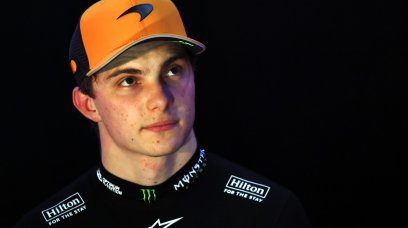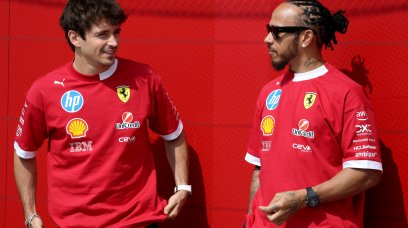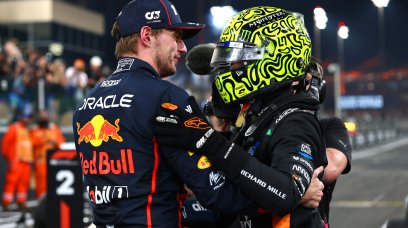Wasthere ever a faster U-turn in public position than Lewis Hamilton'scomment, "If[theFIA]stop me[over ignoring the jewellery ban],then so be it. We have spare drivers, so we're ready and prepared for the weekend", and the seven-time champion’s subsequent removal of the glitzystuff? True,one or two items, which cannot be removed without clinicalintervention, remain attached (for now) to Hamilton’s anatomy - hedid not reveal exactly where - but the eight rings, four necklacesand three watches he had so lavishly displayed during the 11:00 Friday FIA press conference were invisible by the time he wasstrapped into his car for the 14:30 first practice session. Inthe interim, he'd texted with FIA President Mohammed Ben Sulayem andconsulted with FIA Medical Delegate Dr. Sean Petherbridge about theremaining items. The bottom line was that the FIA granted Hamilton athree-week exemption, during which time the Mercedes driver wouldneed to undergo a medical examination and an informed decision wouldbe taken as to their removal.
When did the jewellery issue first arise?
Argumentshad raged back and forth since the Australian Grand Prix, when FIA F1Race Director Niels Wittich announced a clampdown on the wearing ofnon-homologated clothing and jewellery by drivers while in the car,at the time decreeing that any offending drivers had a grace periodof four weeks to comply. Plenty of notice, then – all of whichmakes Hamilton’s intransigence all the more baffling. Atthe heart of the matter lay not a sensationalist battle of wills, butthe clashing principles of safety on one hand and personal freedom onthe other, with Ben Sulayem, installed in global motoring's hottestof hot seats in December last year, arguing that any non-enforcementof a regulation first introduced in 2005 was a matter for hispredecessors, not him. Hamilton'sriposte was a suggestion that the FIA and F1 should concentrate onbigger issues – which is, of course, well and good, but the removalof jewellery or wearing of the correct underwear is hardly atime-consuming matter. Toensure compliance with the regulations, the FIA had inserted two extraclauses - referring specifically to fireproof clothing and jewellery- into the self-certification forms that all F1 teams are required tosubmit as part of the pre-race homologation process. The Miami GrandPrix was the first event under the revised documents, without whichno car is permitted to take to the track for an official session. Askedon Thursday for his opinion of the matter by RacingNews365.com , MercedesF1 boss Toto Wolff was clear: "Ithink it's important to remember why wearing any kind of jewellery isnot permitted in the regulations, and that is to avoid injury. "Wheredo you draw the line? It can cause an injury and I think all of usdon't want to see an accident, freak accident, where suddenly thereis a follow-on injury from jewellery.That'swhy the FIA, at the moment, is trying to draw a line in the sand. Iunderstand where they're coming from."
Refusal to comply opened the door for protests or punishments
Yet,despite his team boss' pragmatic comments, Hamilton refused tocomply - marking the first time in recent memory they have disagreedso openly - causing Mercedes to submit incomplete documents to theFIA Technical Delegate: as recorded in FIA Document 12 issued at12:32 local time. This left the entry open to protest from otherteams and potential exclusion should Car #44 take to the track. Exactly90 minutes later, FIA Document 14 stated: "TheMercedes-AMG Petronas Formula 1 Team has now submitted a completelyfilled-in self-scrutineering sheet for the 2022 Miami GP",leaving the way open for Hamilton to compete, in turn deprivingreserve driver (Mercedes Formula E champion) Nyck de Vries, frommaking his F1 race debut. In the interim, Hamilton was clinicallyexamined and exemption granted. Clearly,reason had gotten to Hamilton, but what form did it take? It waspointed out to the seven-time champion that he is role model tomillions of youngsters, many of whom race (or hope to) in karts andother junior categories. Impressionable kids could well believe thatwearing bling while behind the wheel is a pre-requisite for success,leaving them open to emulation and thus potential injury in the eventof a crash. Thus,Hamilton agreed to submit to the medical examination for this eventand removal of any affixed bling by Monaco three weeks hence.According to FIA sources, no further exemptions will be grantedthereafter. Matter diffused – and, if it ever was a battle of wills,Hamilton knows better than to take on the FIA over safety issues.
Most read







